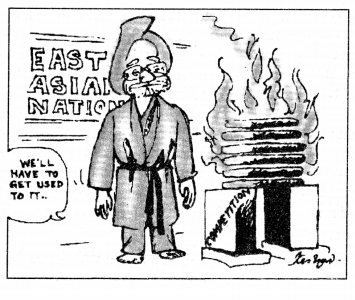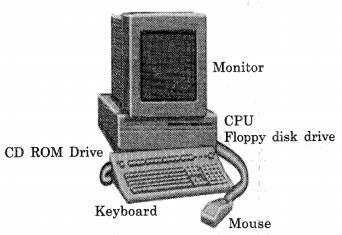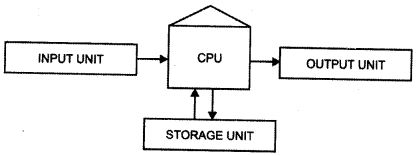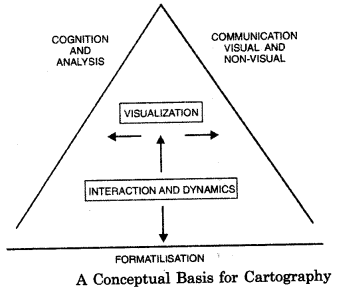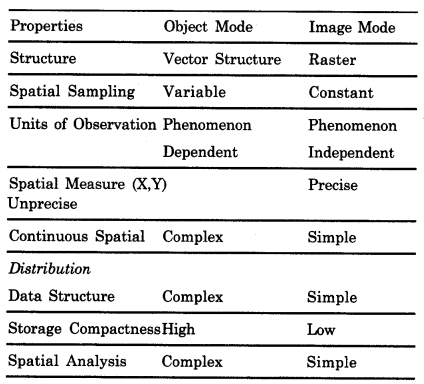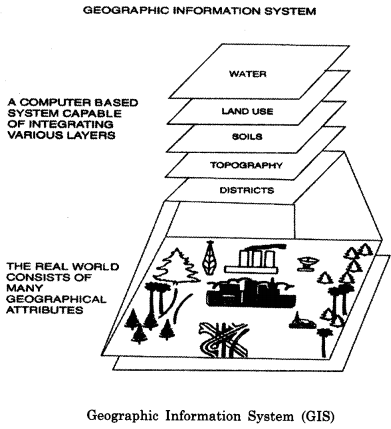Here we are providing Class 12 Political Science Important Extra Questions and Answers Chapter 9 Globalisation. Political Science Class 12 Important Questions are the best resource for students which helps in class 12 board exams.
Class 12 Political Science Chapter 9 Important Extra Questions Globalisation
Globalisation Important Extra Questions Very Short Answer Type
Question 1.
What are the economic consequences of globalisation? (C.B.S.E. 2009)
Answer:
- Economic globalisation draws the role of international institutions like the IMF and the W.T.O.
- Economic globalisation shows the distribution of economic gains i.e., who gets more and who gets less.
Question 2.
Does globalisation lead to ‘Cultural homogenisation’ or ‘Cultural heterogenisation’ or both? Justify. (C.B.S.E. 2009)
Answer:
Globalisation leads to the rise of a uniform culture or what is called cultural homogenisation. But it also leads to each culture becoming more different and distinctive. This phenomenon is known as cultural heterogenisation.
Question 3.
What are the political consequences of globalisation? (C.B.S.E. 2009, 2012 Delhi)
Answer:
- Globalisation has shifted the power to regulate certain activities from the government to international institutions.
- The international organisation like the World Trade Organisation framed rules and regulations for all countries. So, as a result of globalisation market now determines the social and economic priorities of a state.
Question 4.
What is W.S.F.? What is its purpose? (C.B.S.E. 2009 (C))
Answer:
World Social Forum is an international organisation comprising human rights activists, environmentalists, labour leaders, women activists, etc., who opposed to neo-liberal globalisation.
Question 5.
Highlight any two cultural consequences of globalisation. (C.B.S.E. 2012 Delhi)
Answer:
- Globalisation affects us at our home in what we eat, drink, wear and think.
- Globalisation shapes what we think are our preferences.
Question 6.
Show with the help of one example that globalisation has affected the dress culture of India. (C.B.S.E. 2018)
Answer:
Globalisation has affected the dress culture of India also and one example of this is that we wear generally blue jeans with Ivhadi Kurta.
Globalisation Important Extra Questions Very Short Answer Type (2 Marks)
Question 1.
What is meant by flows in relation to globalization? (C.B.S.E. 2008)
Answer:
In globalization, flows represent the flow or movement of ideas, capital, commodities, and people from one part of the world to another.
Question 2.
What caused India’s resistance to Globalisation?
Answer:
Globalization has been opposed in India because the gap between the rich and the poor expanded considerably.
Question 3.
How far is it correct to say that globalization results in the erosion of state sovereignty? (C.B.S.E. 2009) (Imp)
Answer:
Globalization has adversely affected the sovereignty of the state in many ways. The interdependence of the state compelled the state to surrender part of sovereignty i.e. external sovereignty.
Question 4.
How far is it correct to say that globalization actually increases the activities of the state? (C.B.S.E. 2009) (Imp)
Answer:
It is true to a great extent that globalization has increased the activities of the state.
Question 5.
Give any one example to show that events taking place in one part of the world could have an impact on another part of the world. (C.B.S.E. 2017)
Answer:
Policies made by the International Monetary Fund (IMF) and the World Trade Organization affect the whole world.
Question 6.
How far do you agree with the statement that cultural globalization is dangerous not only for the poor countries but for the entire globe? (C.B.S.E. 2017)
Answer:
The effects of globalization are not confined only to the sphere of politics and economy, but its cultural effect gives birth to cultural homogenization. The culture of the politically and economically dominant society leaves its imprint on a less powerful society. This is dangerous not only for the poor countries but for the whole of humanity. It leads to the shrinking of the rich cultural heritage of the entire globe.
Question 7.
Distinguish between cultural homogenization and cultural heterogenization. (C.B.S.E. 2017)
Answer:
The cultural effect of globalization leads to the rise of a uniform culture and it is given the name cultural ‘homogenization’. In this culture of the politically and economically dominant society leave its imprint on the less powerful society-it is homogenization.
The process of adoption of elements of global culture to local culture is known as cultural heterogenization.
Question 8.
Give a suitable example to show that globalization need not always be positive. (C.B.S.E. 2017)
Answer:
In globalization, the market-based economy and capitalism have made the rich richer and the poor poorer.
Question 9.
Assess the impact of Valentine’s Day on Indian culture. (C.B.S.E. 2017)
Answer:
Celebrations of Valentine’s Day is the cultural impact of globalization which was never a part of Indian society in the past. Nowadays press, T.V. students of school and colleges and advertising agencies and marketing, etc. try to make this event very colourful. Many organisations and political parties oppose this celebration of Valentine’s Day.
Question 10.
Why does the mineral Industry invite criticism and resistance in various parts of the globe? Give any one major reason. (C.B.S.E. 2017)
Answer:
There are great criticism and resistance in various parts of the globe for the mineral industry for the possession of developed nations on it.
Question 11.
When the first meeting of WSF was held?
(a) Port Alerge in 2001
(b) Mumbai in 2000
(c) New Delhi in 2004
(d) London in 1998.
Answer:
(a) Port Alerge in 2001.
Question 12.
Globalisation begin in:
(a) 1981
(b) 2000
(c) 1989
(d) 1991.
Answer:
(d) 1991.
Question 13.
When the Seventh meeting of WSF was held?
(a) Nairobi in January 2007
(b) New York in January 2007
(c) New Delhi in January 2007
(d) Paris in March 2007.
Answer:
(a) Nairobi in January 2007.
Question 14. In which meeting there was a protest alleging that unfair trading practiced by the developed countries?
(a) WTO ministerial meetings at Seattle in 1992.
(b) IMF meetings at Washington in 1994.
(c) WTO ministerial meeting at Paris in 1990.
(d) WTO ministerial meeting at London in 1988.
Answer:
(a) WTO ministerial meetings at Seattle in 1992.
Question 15.
Which of the following statements is not true?
(a) Global economy is the most important feature of the globalization.
(b) Global movements have nothing to do with the globalization.
(c) Competitive economy is a basic feature of the globalization.
(d) WTO is an indication of the globalization process.
Answer:
(b) Global movements have nothing to do with the globalization.
Globalisation Important Extra Questions Short Answer Type
Question 1.
Define Globalisation. Explain any three causes of globalisation. (Imp.) (C.B.S.E. 2012 Delhi)
Or
What is Globalisation? Highlight any three causes of globalisation. (C.B.S.E. 2014)
Answer:
The term global literally means, belonging to the globe which in turn implies ‘connected with the natural habitat of humankind i.e., global planet earth’. Globalisation is a process by which the planet earth is considered to be one single unit where social economic interaction among the people is based on interdependence.
The world is considered to be a global village with global issues and problems likely to be talked with global efforts and co-operation. Globalization can also be explained as the globalisation of the world market. In simple words, globalisation means free flow of goods, services, people, capital and cultures across national borders. It has created global electronic communications. Globalisation is a step towards one world, one state and to strengthen the world.
Causes of Globalisation:
- Modern technology is an important cause of globalisation. The inventions of the telegraph, telephone and the microchip in recent time have developed communication among different countries of the world. Due to technology, the whole world has become a global village.
- Expansion of industrialisation and multi-national corporations are also responsible for the development of globalisation.
- Establishment of worldwide institutions is also responsible for the development of globalisation. For example, U.N.O. was established in 1945.
- Modern means of media is an important cause of globalisation.
Question 2.
Explain any four factors responsible for the development of globalisation (C.B.S.E. 2015)
Answer:
- Modern technology is an important cause of globalisation. The inventions of the telegraph, telephone and the microchip in recent time have developed communication among different countries of the world. Due to technology, the whole world has become a global village.
- Expansion of industrialisation and multi-national corporations are also responsible for the development of globalisation.
- Establishment of worldwide institutions is also responsible for the development of globalisation. For example, U.N.O. was established in 1945.
- Modern means of media is an important cause of globalisation.
Question 3.
Highlight any four negative consequences of globalization for the people of India. (C.B.S.E. 2017)
Answer:
- Globalization has encouraged economic inequality in India, which has increased unemployment.
- Critics advocated that this policy is a forceable but not an accepted one. The objective like the welfare of all is just out of the scene from this.
- This is an undemocratic process that has weakened the democratic set up by limitation to the labour, limited role of the welfare state.
- Deduction in subsidies, etc., by the government, has indirectly hit the poor category.
Question 4.
How does globalization result in erosion of state capacity? Explain. (C.B.S.E. 2017)
Answer:
Before the era of globalisation, nation¬state was supreme and omnipotent. However, globalisation h,as shifted from the nation-state to Global Commons. Globalization has resulted in the erosion of state authority. The entry and the increased role of multi-functional companies all over the world have led to a reduction in the capacity of government to take a decision on its own. Almost all countries of the world have joined or accepted the supremacy of IMF and WTO and thus the power of states has reduced as all rules and regulations enacted by these institutions are binding on member-states.
Question 5.
How has state capacity received a boost as a consequence of globalization? Explain. (C.B.S.E. 2017)
Answer:
The states are benefitted by globalisation. In fact, globalisation has increased the activities of the state:
(a) In developing countries, the state continues to be the premier and sole basis for the political community.
(b) Due to globalisation, the states are able to collect better information about individuals.
(c) The state has full power to maintain the law and order. The state is responsible for its security and safety, and adopting better technical know-how makes it more efficient.
(d) The competitive economy is very useful for developed and developing countries. The developed countries are trying to advance and strengthen their economy more and more and developing countries are trying to improve their performances to compete with the industries of the developed countries.
Question 6.
Describe the impact of globalisation in India.
Answer:
The impact of globalisation has been beneficial for India:
- Many new production units have been set up in India in the area of automobiles, information technology, electronics, food processing industries.
- The prices of many consumer goods have come down like T.V., radio, air-conditioner, etc.
- The telecommunication sector has made tremendous growth. People can see many T.V. channels. Mobile phones have reached everywhere and to the masses.
- India’s share in the trade of goods and services in the world has increased.
In spite of these advantages, it has to still improve in some fields like employment generation, providing electricity at low cost, etc.
Question 7.
Mention any four political consequences of globalisation. (C.B.S.E. 2014)
Or
State the political impact of globalisation on the world. (C.B.S.E. Sample Paper 2018)
Or
Explain any two arguments given by the advocates of political globalisation. (C.B.S.E. 2019)
Answer:
Following are the main political consequences of globalisation:
- Globalisation has shifted the power to regulate certain activities from governments to international institutions, which are indirectly controlled by multinational activities.
- The international organisations like the World Trade Organisation frame rules and regulations for all countries.
- The governments at times are forced to change the laws and constitution in accordance with the private sector.
- Some governments are forced to do away with certain rules and regulations which safeguard the rights of the working people and the environment.
Question 8.
Explain any four cultural consequences of globalisation with examples. (C.B.S.E. 2017)
Answer:
Globalisation has not only affected economic and political aspects but it has also affected the culture of the society. Positive consequences of globalisation are as follows:
- Globalisation has increased social mobility and has strengthened the bonds of universal brotherhood.
- Globalisation has almost enriched every culture. It has not created any new culture nor it has not destroyed any culture but has merely made some additions in the customs and fashions of every culture.
- Cultures are not static but changeable with the change of time. Due to globalisation, each culture has influenced other cultures.
- Interactions among different cultures have enlarged our likes and dislikes. For example, globalisation has brought a burger and pizza to India.
Question 9.
Define Globalisation. Is it a multi-dimensional concept? Justify. (C.B.S.E. 2009)
Answer:
- According to Anthony Godden’s, “Globalisation means the intensification of worldwide
social relations which link distinct localities in such a way that local happenings shaped events occurring many miles away and vice-versa.” - According to Robertson, “Globalisation is a concept that refers to the compression of the world and the intensification of the consciousness of the world as a whole.”
Multi-dimensional concept. Globalisation is a multi-dimensional concept. It has political, economic, cultural aspects, etc.
- Globalisation has shifted the power to regulate certain activities from the government to international institutions.
- Economic Aspect: Globalisation has reduced the economic power of the state and privatisation is gaining importance.
- Cultural Aspect: Globalisation has almost enriched every culture. Each culture has influenced other culture.
- Globalisation is seen in the uniform economic policy of all the states in terms of free trade and commerce.
Question 10.
What is meant by globalisation? List any two forms of resistance to globalisation. (C.B.S.E. 2010 Delhi) (Imp)
Answer:
Globalisation is a process by which the planet Earth is considered to be one single unit where social and economic interactions among the people are based on interdependence. The world is considered to be a global village with global issues and problems likely to be talked with global efforts and co-operation.
Two forms of resistance:
- The leftists argued that contemporary globalisation represents a particular phase of global capitalism that makes the rich richer and the poor poorer.
- The rightists express anxiety over political, economic and cultural effects.
Question 11.
Explain any two economic consequences of globalisation. (C.B.S.E. 2014)
Or
Explain any four economic consequences of globalisation. (C.B.S.E. 2017)
Or
Explain any two arguments given by the advocates of economic globalisation. (C.B.S.E. 2019)
Answer:
The economic consequences of globalisation are as follow:
- The role of I.M.F and W.T.O. in the making of economic policies in various countries has increased.
- The restricts in the movement of capital goods across countries have also been reduced.
- Globalisation has reduced the economic power of the state and privatisation is gaining importance.
- Globalisation is seen in the uniform economic policy of all the states in terms of free trade and commerce.
Globalisation Important Extra Questions Long Answer Type
Question 1.
Describe any three factors which are responsible for globalisation. (C.B.S.E. 2015) (Imp.)
Answer:
The term ‘Global’ literally means, belonging to the globe which in turn implies ‘connected with the natural habitat of humankind i.e., global planet earth’. Globalisation is a process by which the planet earth is considered to be one single unit where social and economic interaction among the people is based on interdependence. The world is considered to be a global village with global issues and problems likely to be talked with global efforts and co-operation. Globalisation can also be explained as the globalisation of the world market. In simple words, globalisation means free flow’ of goods, services, people, capital and cultures across national borders. It has created global electronic communications. Globalisation is a step towards one world, one state and to strengthen the world.
Factors responsible for globalisation:
- Globalisation is due to changing conditions of the world and the economic interdependence of nations.
- Globalisation is also encouraged to decrease the dependency on the World Bank and international currency.
- Globalisation is required for greater economic growth and wellbeing for the larger sections of the population.
Economic globalisation is inevitable and it is not wise to resist the march of growth.
Question 2.
Explain the positive Impacts of globa1isatIii on the present-day world. Imp. (c.BS.E. 2015)
Answer:
Globalisation is a romantic word which is often described by economists, sociologists, intellectuals, scientists, etc., after 1980. Globalisation made different countries closer to each other. All the countries are increasing their business. Globalisation is a common fact and no one can ignore it. But there are different opinions and uses of Globalisation in India and other international countries.
There are mainly two different opinions in this regard. First, is the positive or optimistic idea and the other is the negative or pessimistic approach. The supporters of Globalisation believe that by this policy, welfare can be done for all, and this proved as Sustainable Development. But the critics meant this policy as an illusion, which is a severe danger for semi-developed economy. In short, the following are the arguments in favour and against Globalisation.
Arguments in favour of/positive aspects/benefits
1. Globalisation is a compulsory process for the International environment to progress. There is no other alternative for the developing countries, excepts to join this policy.
2. By Globalisation, the mobility of capital is increased and it has been used internationally which has made the developing countries dependent on the International Monetary Fund and World Bank.
3. However, there are some defects in this policy but this doesn’t mean, that it is less useful. In reality, the policy is in the primary stage. When it becomes a Global process, then it will continually help in development. Its permanency can only lead to sustainable development.
4. The World Trade Organisation should be understood as an instrument of globalisation. If this policy is controlled impartially, then it will be a profitable policy.
5. The position of technology is not good enough. But they can get profit from the developed technology, by the process of globalisation.
6. Globalisation gives rise to worldwide information, which has joined every class of society. This has encouraged social mobility.
7. Possibility of employment in multinational companies have increased.
8. Ideas like Liberalism have become popular. Communist China is also influenced by the process of Liberalism.
ARGUMENTS AGAINST/NEGATIVE ASPECTS/DEMERITS
- Globalisation is supported by developed countries like America, England, France, Japan, Germany, etc. They need a market for their products which can only be acquired through Globalisation.
- These multinational companies are interfering in the political systems of small or developing countries.
- This policy has encouraged economic inequality which has increased the unemployment in the third world countries.
- Critics advocated that this policy is a forceable but not an accepted one. The objective like the welfare of all is just out of the scene from this.
- This is an undemocratic process that has weakened the democratic set up by limitation to the labour, limited role of the welfare state.
- Deduction in subsidies, etc., by the government, has indirectly hit the poor category.
- Globalisation has created a cultural crisis by which encouragement is given to the Constitution. The young generation is mad for Pepsi, Coca-Cola and other brands of Western products.
- Critics meant that the policy has also influenced the education system, which has established dominance of the English language. This education has commercialisation and it stressed on the markets which have made a fall in values and ethics.
Conclusion: From the above-mentioned points in favour and against globalisation, it becomes clear that it is of no need to make its end. This is a gradual process. Thus, to estimate, it is not correct. The necessity is that to stop the narrow politics in globalisation. But it should be organised impartially and without any force.
Question 3.
Describe any three effects of globalisation on the economy of a country. (C.B.S.E. 2015)
Answer:
Globalisation is a process by which the Planet Earth is considered to be one single unit where social and economic interaction among the people is based on interdependence. The world is considered to be a global village with global issues and problems likely to be talked with global efforts and co-operation. Following are the three effects of globalisation on the economy of a country.
- The role of IMF and WTO in the making of economic policies in the various countries, as increased.
- The restriction on the movement of capitals across countries has also been reduced.
- Another effect of globalisation on the economy of a country is that rapid economic development.
Question 4.
Assess any three bases on which globalisation is being resisted in India. (C.B.S.E. 2014)
Answer:
Globalisation is a process by which the Earth is considered to be one single unit where social and economic interactions among the people are based on interdependence. The world is considered to be a global village with global issues and problems likely to be talked with global efforts and co-operation. Following are the three bases on which globalisation is being resisted in India:
- The leftists argued that contemporary globalisation represents a particular phase of global capitalism which makes the rich richer and the poor poorer. The weakening of the state leads to a reduction in the capacity of the state to protect the interest of the poor section.
- The rightists express anxiety over political, economic and cultural effects.
- In India, some NGOs and Environmentalists opposed the concept of globalisation. They argued that it leads to environmental problems which cause harm to public health.
Question 5.
Explain globalisation. How I technology contributed to promoting globalisation? (C.B.S.E. 2015)
Answer:
Meaning of globalisation:
- Economic globalisation draws the role of international institutions like the IMF and the W.T.O.
- Economic globalisation shows the distribution of economic gains i.e., who gets more and who gets less
Contribution of Technology in Promoting globalisation: Globalisation has not only affected economic and political aspects but it has also affected the culture of the society. Positive consequences of globalisation are as follows:
- Globalisation has increased social mobility and it has strengthened the bonds of universal brotherhood and led to cultural homogenisation or uniform culture.
- Globalisation has almost enriched every culture. It has not created any new culture nor it has destroyed any culture. It has merely made some additions in the customs and fashions of every culture. It has not destroyed the basic features of any culture.
- Cultures are not static but changeable with the change of time. Due to globalisation, each culture has influenced other cultures.
Question 7.
Read the following passage carefully anil answer the following a question: (C.B.S.E. 2016)
At the most simple level, globalisation results in an erosion of state capacity, that is, the ability of government to do what they do. All over the world, the old ‘welfare state’ is now giving way to a more minimalist state that performs certain core functions such as the maintenance of law and order and the security of its citizens. However, it withdraws from many of its earlier welfare functions directed at economic and social well-being. In place of the welfare state, it is the market that becomes the prime determinant of economic and social priorities.
(i) What do the words ‘erosion of state capacity’ imply? Explain with the help of an example.
Answer:
Due to globalisation ‘an erosion of state capacity’, that is the ability of the government to do what they earlier do, have decreased. The old ‘welfare state’ is giving way from its welfare functions directed at economic and social well-being.
(ii) Why is the concept of welfare state giving way to minimalist state?
Answer:
The concept of the welfare state is giving way to a minimalist state to perform only certain core functions and these are the maintenance of law and order and the security-of its citizens.
(iii) How has the market become the prime determinant of social priorities?
Answer:
The state has withdrawn from many of its earlier welfare functions i.e. economics and social well- being. In place of the welfare state, it is the market that becomes the .prime determination of economic priorities.
Question 8.
Globalisation does not always reduce state capacity. The primacy of the state continues to be the unchallenged basis of the political community. The old jealousies and rivalries between countries have not ceased to matter in the world, politics. The state continues to discharge its essential functions (law and order, national security) and consciously withdraws from certain domains from which it wishes to. State, continue to be important.
Indeed, is some respect state capacity has received a boost as a consequence of globalisation, with enhanced technologies available at the disposal of the state to collect information about its citizens.
Read the passage given above carefully and answer the following questions: (C.B.S.E. 2016)
(i) What are the two most essential functions of the state?
Answer:
The two most essential functions of the state are law and order and national security.
(ii) How do enhanced technologies enable the state to rule better?
Answer:
In modern days the latest technologies available at the disposal of the state to collect information about its citizens and make better policies for them.
(iii) Justify with the help of an example that globalisation gives a boost to the state capacity.
Answer:
In some respects, state capacity has received a boost as a consequence of globalisation due to latest technologies.
Question 9.
Read the following passage and answer the questions below: (C.B.S.E. Sample Paper 2018)
Globalisation as a concept fundamentally deals with flows. These flows could be of various kinds- Ideas moving from one part of the world to another, capital shunted between two or more places, commodities being traded across borders, and people moving in search of better livelihoods to different parts of the world. The crucial element is the worldwide ‘interconnectedness’ that is created and sustained as a consequence of these constant flows. Globalisation is a multi-dimensional concept. It has political, economic and cultural manifestations and these must be adequately distinguished.
(i) “Globalisation is a multi-dimensional concept”. Justify
Answer:
- According to Anthony Giddens, “Globalisation means the intensification of worldwide
social relations which link distinct localities in such a way that local happenings shaped events occurring many miles away and vice-versa.” - According to Robertson, “Globalisation is a concept that refers to the compression of the world and the intensification of the consciousness of the world as a whole.”
Multi-dimensional concept. Globalisation is a multi-dimensional concept. It has political, economic, cultural aspects, etc.
- Globalisation has shifted the power to regulate certain activities from the government to international institutions.
- Economic Aspect. Globalisation has reduced the economic power of the state and privatisation is gaining importance.
- Cultural Aspect. Globalisation has almost enriched every culture. Each culture has influenced other culture.
- Globalisation is seen in the uniform economic policy of all the states in terms of free trade and commerce.
(ii) In Globalisation, the crucial element is the ‘worldwide interconnectedness’. Substantiate the statement with two suitable examples.
Answer:
The modern age is the age of interdependence. People and states are interdependent. People feel that they cannot live in isolation, rather they have to live as inter-connected. People living in different parts of the world feel that they are not members of the different nations, but members of a World Community, it is globalisation. In simple words, worldwide interconnectedness means the flow or movement of ideas, capital, commodities and people from one part of the world to another. Its components are ideas, capital, commodities and people.
(iii) How the disintegration of USSR helped in spreading globalisation across the world?
Answer:
The disintegration of U.S.S.R. helped in spreading globalisation around the world because.
- Due to the disintegration of U.S.S.R., the ideology of communism replaced by the ideology of capitalism.
- The spread of capitalism in the second world speeded the process of globalisation.
Question 10.
Evaluate the cultural consequences of globalisations. (C.B.S.E. 2019)
Answer:
Globalisation is a process by which the planet Earth is considered to be one single unit where social and economic interactions among the people are based on interdependence. The world is considered to be a global village with global issues and problems likely to be talked with global efforts and co-operation.
Globalisation has not only affected economic and political aspects but it has also affected the culture of the society. Positive consequences of globalisation are as follows:
1. Globalisation has increased social mobility and has strengthened the bonds of universal brotherhood.
2. Globalisation has almost enriched every culture. It has not created any new culture nor it has not destroyed any culture but has merely made some additions in the customs and fashions of every culture.
3. Cultures are not static but changeable with the change of time. Due to globalisation, each culture has influenced other cultures.
4. Interactions among different cultures has enlarged our likes and dislikes. For example, globalisation has brought a burger and pizza to India.
Question 11.
Read the passage given below carefully and answer the following questions: (C.B.S.E. 2019)
While globalisation is not caused by any single factor, technology remains a critical elelment. There is no doubt that the invention of the telegraph, the telephone, and the microchip in more recent times has revolutionised communication between different parts of the world. When printing initially came into being it laid the basis for the creation of nationalism. So also today, we should expect that technology will affect the way we think of our personal but also our collective lives.
(i) How has technology aided globalisation?
Answer:
Many factors are responsible for the growth of globalisation. However, technology is the major factor which has played a very important role in the development of globalisation.
- Recently, a revolution in communications and information technology has brought the states very close to each other and it has increased the interdependence of the states.
- Advancement in technology has made it possible for individuals to keep themselves fully informed of all events and happenings in the world.
- Modern technology has made it possible for the people, capital, commodities, ideas, etc. to move from one place to another place i.e. from one country to another country.
- Due to advancement in technology events, taking place in one part of the world has impacted other parts of the world.
(ii) Globalisation is a multi-dimensional concept. Justify the statement.
Answer:
Globalisation is a multi-dimensional concept. It has political, economic, cultural aspects, etc.
(a) Political Aspect: Globalisation has shifted the power to regulate certain activities from the government to international institutions.
(b) Economic Aspect: Globalisation has reduced the economic power of the state and privatisation is gaining importance.
(c) Cultural Aspect: Globalisation has almost enriched every culture. Each culture has influenced
other culture.
(iii) Give examples of any two events or happenings that have a global impact.
Answer:
(a) Increasing impact of technology.
(b) Impact of poverty and Epidemic at the global level.
Question 12.
Read the passage given below carefully and answer the following questions: (C.B.S.E. 2019)
Globalisation affects us in our home, in what we eat, drink, wear and indeed in what we think. It shapes what we think are our preferences. The cultural effect of globalisation leads to the fear that this process poses a threat to cultures in the world. It does so because globalisation leads to the rise of a uniform culture or what is called cultural homogenisation. The rise of a uniform culture is not the emergence of a global culture. What we have in the name of a global culture is the imposition of Western culture on the rest of the world. But there are some positive aspects of cultural globalisation as well.
(i) How is cultural homogenisation different from cultural heterogenisation? Explain.
Answer:
The cultural effect of globalisation leads to the rise of a uniform culture and it is given the name cultural ‘homogenisation’. In this culture of the politically and economically dominant society leave its imprint on the less powerful society-it is homogenisation.
The process of adoption of elements of global culture to local culture is known as cultural heterogenization.
(ii) “Sometimes external global influences simply enlarge our choices or modify our culture Without overwhelming the traditional system.” Give three illustrations to prove the statement.
Answer:
(a) ‘Burger’ is a substitute for a ‘Masala dosa’ and is added to our food choice.
(b) Khadi Kurta is worn with blue Jeans- it is a new and unique combination.
(c) Cultural homogenisation is now an aspect of globalisation and this phenomenon is called cultural heterogenisation.
Globalisation Important Extra Questions HOTS
Question 1.
What is the meaning of Globalisation?
Answer:
Globalisation is a process by which the planet Earth is considered to be one single unit where social and economic interactions among the people are based on interdependence. The world is considered to be a global village with global issues and problems likely to be talked with global efforts and co-operation.
Question 2.
How many parameters does globalisation have?
Answer:
The term globalisation has four parameters:
(а) Reduction of trade barriers to permit a free flow of goods.
(b) Creation of a good environment for capital.
(c) Creation of a good environment for technology.
(d) Creation of environment for free movement of labour in different countries of the world.
Question 3.
Write two features of Globalisation.
Answer:
1. Global Economy: The global economy is the most important feature of globalisation. In the process of globalisation, it has been observed that national economies have been integrated into a global economy.
2. Expansion of Industrialisation and MNCs: Expansion of industrialisation is another feature of globalisation. Globalisation has increased the value of the multi-national business organisation.
Question 4.
Give one definition of globalisation.
Answer:
According to Stiglitz, “Globalisation is the closer integration of the countries and peoples of the world which has been brought about by the enormous reduction of costs of transportation and communications, and the breaking down of artificial barriers to the flow of goods and services capital, knowledge and (to a lesser extent) people across borders.”
Question 5.
Mention any two impacts of globalisation on the developing countries.
Answer:
- The information technology industry in India got a new boost.
- The entry of many manufactured goods threatens the local industries.
Question 6.
Write different aspects of the concept of globalisation.
Answer:
Globalisation is a multi-dimensional concept. It has different aspects i.e., political, economic and cultural. Its effects are also vast and uneven.
